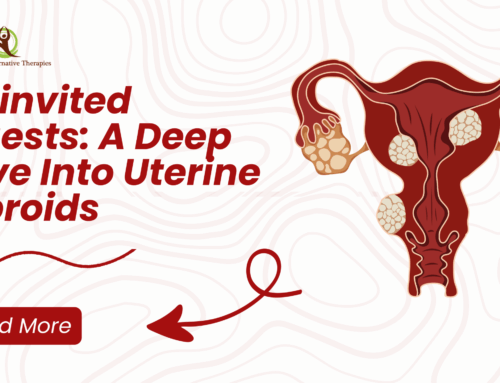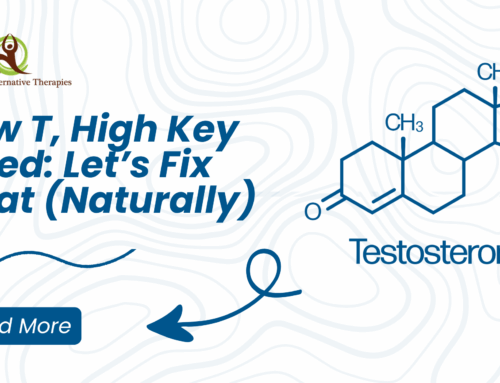May is Celiac Disease Awareness Month
Overview
The human intestinal microbiome acts as a signaling hub that integrates environmental inputs, such as diet and lifestyle, with our genetic and metabolic pathways. Its impacts are widespread across host systems, including the immune system, which can adapt and respond to a wide range of challenges.
Maintaining a homeostatic balance between microbial activity and host immune response toward the microbiota is what allows the immune system to function appropriately to defend against infection yet also demonstrate appropriate tolerance.
Celiac disease (CD) is a common disorder that is estimated to affect about one percent of the population. It is a condition in which the absorptive surface of the small intestine is damaged by a substance called gluten. Gluten is a group of proteins present in wheat, rye and barley and their cross bred grains. The damage to the intestine can lead to a variety of symptoms and result in an inability of the body to absorb nutrients such as protein, fat, carbohydrates, vitamins and minerals, which are necessary for good health.
How common is celiac disease?
Celiac disease is now recognized as one of the most common chronic diseases in the world. It is estimated that it affects as many as 1 in every 100 – 200 people in North America. As many as 300,000 Canadians could have this disease; however, many remain undiagnosed.
It is now recognized that it occurs more frequently in adults, especially in individuals between 30 and 60 years of age. A recent Canadian survey on celiac health reported that the average age of diagnosis in adults was 46 years of age.
Symptoms
Classical (typical) symptoms include:
- chronic diarrhea
- abdominal pain
- malabsorption
- weight loss
- Dermatitis herpetiformis is “celiac disease” of the skin
However, many patients now present with non-classical (atypical) symptoms including:
- anemia
- osteoporosis
- extreme fatigue
- oral ulcers
- liver enzyme abnormalities
- constipation
- infertility
- dental enamel defects
- neurological problems, etc.
Children can present with:
- constipation
- chronic diarrhea
- swollen belly
- gas
- pale, foul-smelling stools
- nausea and vomiting
Inability to absorb nutrients can result in:
- short stature
- irritability
- failure to thrive (infants)
- anemia
- delayed puberty
- damage to tooth enamel
- neurological symptoms such as headaches, learning disabilities, lack of muscle coordination and seizures, etc.
Celiac disease occurs commonly in patients with other autoimmune disorders such as thyroid disease and type-I diabetes. It can also run in families, both in first- and second-degree relatives.
Dermatitis herpetiformis is “celiac disease” of the skin. Patients present with a severely itchy blistering rash. The diagnosis can be confirmed with a skin biopsy. Treatment consists of strict gluten-free diet and, in some cases, medications. Learn more about Dermatitis Herpetiformis here: Dermatitis Herpetiformis
Diagnosis
Now, highly effective blood tests are available to screen for CD. The IgA-tissue transglutaminase (TTG) antibody is the currently recommended test for screening. The patients must be on a regular (gluten-containing) diet at the time of testing to make the results valid.
- Accurate diagnosis is crucial. Functional medicine practitioners often utilize a combination of:
- Serologic Testing: Measuring tissue transglutaminase IgA antibodies to detect celiac disease.
- Genetic Testing: Identifying HLA-DQ2 and HLA-DQ8 genes associated with celiac disease susceptibility.
- Comprehensive Panels: Evaluating gluten sensitivity and other autoimmune markers.
- The following tests can screen for and assess these risks:
- Complete blood count (CBC)
- Comprehensive metabolic panel (CMP)
- Thyroid panel
- Lactose intolerance breath test
- Micronutrient test
- Comprehensive stool analysis
- Biopsy: The definitive diagnosis of CD is made by a small intestinal biopsy. The biopsy is performed via endoscopy by gastroenterologists. Again, it is important that gluten not be removed from the diet before the biopsy is completed as it may impair the confirmation of the diagnosis.
The Risks of Untreated Celiac Disease
When CD goes undiagnosed and unmanaged, it is associated with an increased risk of serious complications, including:
- Malnutrition
- Gallbladder and liver diseases
- Development of other autoimmune diseases
- Osteoporosis
- Infertility
- Epilepsy
- Heart disease
- Small bowel cancer
Treatment
At present, there is no permanent cure for CD but it can be effectively treated with a gluten-free diet. The adherence to the gluten-free diet must be STRICT and LIFE-LONG. Gluten-free diet can be challenging and complicated and a consultation with a registered dietitian with expertise in gluten-free diet is essential.
Gut Healing and Nutrient Repletion Approach
Managing celiac disease requires a comprehensive approach that includes strict adherence to a gluten-free diet and addressing associated nutritional deficiencies. While homeopathic remedies and certain supplements may offer supportive benefits, they should complement, not replace, conventional medical treatments. Below is an integrative overview:
Celiac disease often leads to intestinal damage and nutrient deficiencies. Functional medicine focuses on:
- Intestinal Repair: Utilizing nutrients like L-glutamine and zinc carnosine to support mucosal healing.
- Addressing Dysbiosis: Balancing gut microbiota through targeted probiotics and dietary interventions.
- Nutrient Supplementation: Replenishing deficiencies in iron, vitamin D, B12, and other essential nutrients.
- Being Vigilant: Individuals with celiac CD need to vigilant about hidden sources of gluten and cross contamination in food products. Carefully read labels when buying products is important.
- Addressing Associated Conditions: Celiac disease can be associated with other autoimmune conditions and lactose intolerance. A functional medicine approach includes screening and managing these comorbidities.
Nutrition-Guide to Eating Gluten-Free
Cutting gluten out of your diet may seem difficult and restrictive. Fortunately, there are many healthy and delicious foods that are naturally gluten-free.
These include fruits, vegetables, meat and poultry, fish and seafood, dairy products, beans, legumes, and nuts
Grains, Flours, and Starches
Gluten-free oats* have a similar structure to gluten-containing grains. Also, they may be contaminated with gluten-containing grains during processing. Because of these factors, gluten-free oats may cause negative symptoms in some patients. Those with celiac disease and gluten intolerance should use caution when consuming oats.
Gluten-Free
- Amaranth
- Arrowroot
- Bean flour (garbanzo, fava, Romano, etc.)
- Buckwheat, buckwheat groats (kasha)
- Cassava flour
- Chia seeds
- Corn (maize), cornmeal
- Flax, flax meal
- Hominy
- Manioc flour
- Mesquite flour
- Millet
- Montina flour
- Nut flour and meals (almonds, coconut, hazelnut, etc.)
- Oats (gluten-free) *
- Pea flour
- Potato flour, potato starch
- Quinoa
- Rice (all), rice bran
- Sago
- Sorghum flour
- Soy flour
- Tapioca flour
- Teff
- Yucca
Gluten-Containing
- Barley
- Bulgar (bulgur)
- Cereal binding
- Chapatti flour (atta)
- Couscous
- Kinkel
- Durum
- Einkorn
- Emmer
- Farina
- Farrow
- Fu
- Gluten, gluten flour
- Graham flour
- Kamut
- Malt (malt beverages, extract, flavoring, syrup, vinegar, etc.)
- Matzoh meal
- Oats (oat bran, oat syrup) *
- Orzo
- Rye
- Seitan (“wheat meat”)
- Semolina
- Spelt
- Textured vegetable protein (typically contains gluten)
- Triticale
- Wheat, all varieties (bran, germ, starch)
Gluten-Free Substitutes
Gluten-free alternatives to typical gluten-containing foods are now widely available in most grocery stores. But keep in mind that many products made with gluten-free alternatives include additives and fillers that help mimic the texture of gluten-containing products you’re used to eating.
The following foods may contain hidden sources of gluten. Read labels carefully when shopping, ask the restaurant staff to confirm that the food has not been dusted with flour or cross-contaminated in deep fryers.
- Brown rice syrup (made with barley enzymes)
- Candy, candy bars
- Cheesecake filling
- Eggs prepared in restaurants (sometimes include pancake batter)
- Energy bars
- French fries
- Granola bars
- Marinades
- Meat substitutes (vegetarian burgers, vegetarian sausage, imitation bacon, imitation seafood, etc.)
- Multi-grain or “artisan” tortillas and tortilla chips
- Pizza, gluten-free (restaurants offering gluten-free crusts do not always keep gluten-free
- items separate from the rest of the kitchen)
- Potato chips
- Pre-seasoned meats
- Processed lunch meats
- Salad dressings
- Self-basting poultry
- Soup
- Soy sauce
- Starch or dextrin (in meat or poultry products)
- Tater tots
Probiotic Rich foods
- Yogurt/kefir with Lactobacillus bulgaricus and Streptococcus thermophiles
- Miso
- Natto
- Tempeh
- Sauerkraut
- Kimchi
- Raw pickles
- Fermented anything
- Root and ginger beers
- Pulque
- Kombucha
- Buttermilk
- Raw whey
- Raw vinegars
- Sourdough
- Beer/wine
Homeopathic remedies for Celiac Disease and Leaky Gut Syndrome
Homeopathic treatment for celiac disease includes medicines like Natrum Sulph, China, Lycopodium, Kali Carb, Carbo Veg, and Arsenic Album. These are some of the most well indicated homeopathic medicines for treating celiac disease symptomatically.
- Arsenicum Album: when digestive issues like diarrhea and abdominal pain and for extreme weight loss.
- Carbo Vegetabilis: when stool is frequent and has very bad odor.
- Cinchona Officinalis (China): when Diarrhea presents with marked weakness and exhaustion.
- Kali Carbonicum: when excessive gas forms in the abdomen.
- Lycopodium Clavatum: when bloating and gas occurs after eating.
- Natrum Sulphuricum: for yellow and watery Stool
- Nux Vomica: for indigestion and sensitivity to dietary indiscretions.
Tissue Salts
Tissue salts, or cell salts, are believed to support cellular function. Relevant salts include:
- Calcarea Phosphorica: supports bone health, addressing the risk of osteoporosis.
- Ferrum Phosphoricum: may assist with iron absorption, combating anemia.
- Natrum muriaticum: addresses digestive disturbances.
Ayurveda and Herbs for Celiac Disease
The treatment approach of celiac disease in Ayurveda medicinal science involves the intake of various preparations of some specific medicinal plants like Kutaja (Holarrhena antidysenterica) Pippali, (Piper longum Linn.), Chitraka, (Plumbago zeylanica) Guduchi, (Tinospora cordifolia) Ashwagandha, (Withania somnifera), Haridra (Curcuma longa Linn.), etc which have Agni Deepana and Ama Pachana properties. These illness-specific medicinal herbs help normalize digestive fire and evict “Ama” toxins from the body channels, which pacify the vitiated Agni and maintain homeostasis among vitiated Doshas. Other herbs may alleviate symptoms or support gut health:
- Turmeric: contains curcumin, which has anti-inflammatory properties Ginger
- Marshmallow root: provides mucilage to protect intestinal walls.
- Slippery Elm: soothes the digestive tract lining.
Minerals, Supplements and Vitamins for Celiac Disease
Repair by providing nutritional support for healing and regeneration of the Gastrointestinal (GI) mucosa:
- Nutrients for GI repair and healing: Glutamine, Arginine, Vitamin A and D, Vitamin C, Zinc, Pantothenic Acid, Vitamin E, carotenoids.
- Mucosal lining support: Phosphatidylcholine
- Mucosal secretion protectant: Plantain, Polysaccharides (Xyloglucan).
- Support the Gut-Associated Lymphoid Tissue (GALT) function Lactoferrin, Lactoperoxidase, Whey immunoglobulins, whey protein in Chron’s disease.
- Antioxidants like Catechins, Green tea 100-300 mg TID
- Nutritional and Phyto nutritional Anti-inflammatories like Curcumin, EPA and DHA.
- Rebalance refers to providing support for restorative processes in a patient life like Scheduling relaxation, Mindful eating and better choices, Biofeedback, Yoga, meditation, breathing, prayer, psychotherapy.
- B-Complex specially B-12, B-6 and Folate. Vitamin B12 and Folate are essential for nerve function and red blood cell production.
- Calcium for bone health.
- Digestive enzymes
- Iron to address anemia.
- Vitamin K because it is usually deficient.
- L-Glutamine: For wound healing and general intestinal support.
- Magnesium to address anemia.
- Omega-3 to decrease inflammation
- Probiotics:
- Lactobacillus species: Reuteri, Casei Rhamnosus, Acidophilus, Plantarum
- Bifidobacterium species: infantis, lactis, longum, breve, bifidum.
- Streptococcus species: S Boulardii (nonhuman) after using antibiotics
- Prebiotics:
- FOS Fructooligosaccharides 1000-5000 mg QD or TID
- GOS Galactooligosaccharides-Guar
- Lactulose derived Galactooligosaccharides
- Xylo oligosaccharides (XOS)
- Arbinooligosaccharides (AOS) -Arabinogalactans 500-5000 mg QD-TID
- Algae derived marine oligosaccharides (ADMO)
- Pectin derived Oligosaccharides (pAOS)-Modified Citrus Pectin 3-5 g BID-TID
- Human milk oligosaccharides
- Modified starch
- Soluble fiber
- Inulin 1000-5000 mg QD or TID
Celiac Disease, an autoimmune disorder, is becoming a cause of global concern with its increasing prevalence and incidence. The disorder poses multiple challenges given the asymptomatic state of the patients, compliance with a gluten-deficient diet, and multiple pathogenic mechanisms. Therefore, there is a need to investigate the clinicopathological spectrum of the disease, specifically, treatment pathways for novel agents.
It is essential to consult with healthcare professionals before initiating any alternative treatments.
References:
- https://www.canada.ca/en/health-canada/services/food-nutrition/food-safety/food-allergies-intolerances/celiac-disease.html
- https://www.celiac.ca/gluten-related-disorders/celiac-disease/
- https://www.ifm.org/articles/role-of-microbiome-in-immune-diseases
- Jiao Y, Wu L, Huntington ND, Zhang X. Crosstalk between gut microbiota and innate immunity and its implication in autoimmune diseases. Front Immunol. 2020; 11:282. doi:10.3389/fimmu.2020.00282
- Wiertsema SP, van Bergenhenegouwen J, Garssen J, Knippels LMJ. The interplay between the gut microbiome and the immune system in the context of infectious diseases throughout life and the role of nutrition in optimizing treatment strategies. Nutrients. 2021;13(3):886. doi:10.3390/nu13030886
- Pagliari D, Gambassi G, Piccirillo CA, Cianci R. The intricate link among gut “immunological niche,” microbiota, and xenobiotics in intestinal pathology. Mediators Inflamm. 2017; 2017:8390595. doi:10.1155/2017/8390595
- Shah S, Akbari M, Vanga R, et al. Patient Perception of Treatment Burden is High in Celiac Disease Compared to Other Common Conditions. Am J Gastroenterol. 2014 Sept; 109(9): 1304-1311. doi: 10.1038/ajg.2014.29
- Roy A, Minaya M, Monegro M, et al. Partner Burden: A Common Entity in Celiac Disease. Dig Dis Sci 61, 3451–3459 (2016). https://doi.org/10.1007/s10620-016-4175-5
- Homeopathy and Celiac Disease: A Contribution toward Healing.
- Marino, Francesco V. American Journal of Homeopathic Medicine, 2012, v. 105, n. 1, p. 4.
- https://www.drhomeo.com/?s=celiac+disease
- Gayatri, Gayatri and Jigyasha, Jigyasha and Singhal, Harish Kumar (2024) Role of Ayurvedic Herbs in the Management of Celiac Disease.Journal of Pharmaceutical Research International, 36 (6). p.p. 122-134. ISSN 2456-9119
- Singh MM. Integrative Approaches to Managing Gut Health. Curr Gastroenterol Rep. 2024 Jul;26(7):181-189. doi: 10.1007/s11894-024-00927-7. Epub 2024 Mar 12. PMID: 38472695.
- Ghazanfar H, Javed N, Lee S, Shaban M, Cordero D, Acherjee T, Hasan KZ, Jyala A, Kandhi S, Hussain AN, Patel H. Novel Therapies for Celiac Disease: A Clinical Review Article. Cureus. 2023 May 14;15(5): e39004. doi: 10.7759/cureus.39004. PMID: 37323330; PMCID: PMC10263194.
- Degree of damage to the small bowel and serum antibody titers correlate with clinical presentation of patients with celiac disease. Taavela J, Kurppa K, Collin P, et al. Clin Gastroenterol Hepatol. 2013; 11:166–171. doi: 10.1016/j.cgh.2012.09.030.
- Celiac disease: prevalence, diagnosis, pathogenesis and treatment. Gujral N, Freeman HJ, Thomson AB. World J Gastroenterol. 2012; 18:6036–6059. doi: 10.3748/wjg. v18.i42.6036.
- Clinical utility of celiac disease-associated HLA testing. Pallav K, Kabbani T, Tariq S, Vanga R, Kelly CP, Leffler DA. Dig Dis Sci. 2014;59:2199–2206. doi: 10.1007/s10620-014-3143-1.
- HLA-DQ typing in the diagnostic algorithm of celiac disease. Piccini B, Vascotto M, Serracca L, et al. Rev Esp Enferm Dig. 2012; 104:248–254. doi: 10.4321/s1130-01082012000500005.
- Advances in diagnosis and management of celiac disease. Kelly CP, Bai JC, Liu E, Leffler DA. Gastroenterology. 2015; 148:1175–1186. doi: 10.1053/j.gastro.2015.01.044.




